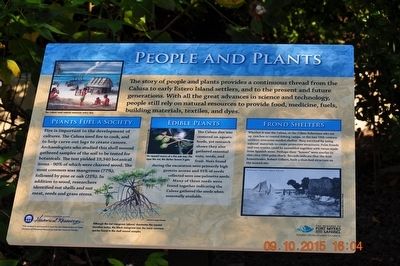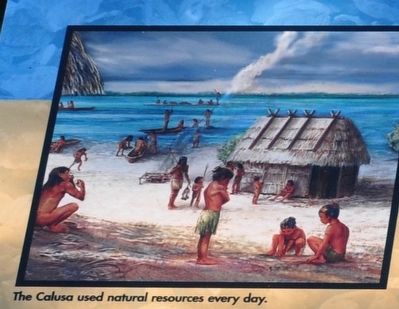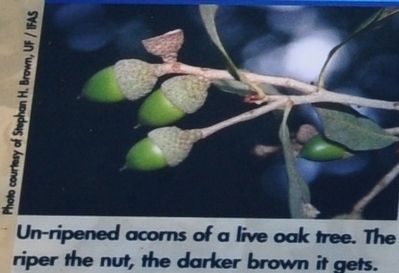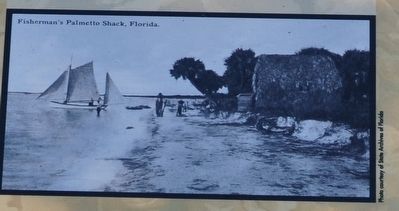Fort Myers in Lee County, Florida — The American South (South Atlantic)
People and Plants
Plants Fuel a Society
Fire is important to the development of cultures. The Calusa used fire to cook, and to help carve out logs to create canoes. Archaeologists who studied this shell mound gathered samples of the soil to be tested for botanicals. The test yielded 19,340 botanical items - 90% of which were charred wood. The most common was mangroves (77%), followed by pine or oak (21%). In addition to wood, researchers identified nut shells and nut meat, seeds and grass stems.
Edible Plants
The Calusa diet was centered on aquatic foods, yet research shows they also gathered seasonal nuts, seeds, and fruit. Nuts found during the excavation were primarily high protein acorns and 91% of seeds collected were saw palmetto seeds. Many of these seeds were found together indicating the Calusa gathered the seeds when seasonally available.
Frond Shelters
Whether it was the Calusa, or the Cuban fisherman who set up ranchos or coastal fishing camps, or the late 19th century settlers - everyone needed shelter. They survived by using natural materials to create protective structures. Palm fronds and tree trunks could be assembled together with twine made from Spanish moss. Perhaps their “houses” were similar to this circa 1910 palm shack. Records indicate that the first homesteader, Robert Gilbert, built a thatched structure on the mound site.
Erected by Department of State, Division of Historical Resource.
Topics. This historical marker is listed in these topic lists: Agriculture • Anthropology & Archaeology • Native Americans • Settlements & Settlers.
Location. 26° 26.749′ N, 81° 55.666′ W. Marker is in Fort Myers, Florida, in Lee County. Marker can be reached from Connecticut Street east of Shell Mound Boulevard, on the left when traveling east. Touch for map. Marker is at or near this postal address: 451 Connecticut St, Fort Myers Beach FL 33931, United States of America. Touch for directions.
Other nearby markers. At least 8 other markers are within 6 miles of this marker, measured as the crow flies. Plants and Progress (here, next to this marker); Nature's Landlord (approx. 5.4 miles away); Sanibel Lighthouse (approx. 5.4 miles away); The Beach is a wild place (approx. 5.4 miles away); Molluscan Reproduction and Egg Case (approx. 5.4 miles away); Sanibel & Everglades Restoration (approx. 5.4 miles away); Sea Turtles on Sanibel (approx. 5.4 miles away); Mollusks and the Environment (approx. 5.4 miles away).
Also see . . . The Mound House. (Submitted on November 30, 2015.)
Credits. This page was last revised on August 30, 2017. It was originally submitted on November 26, 2015, by Sandra Hughes Tidwell of Killen, Alabama, USA. This page has been viewed 314 times since then and 10 times this year. Photos: 1, 2, 3, 4. submitted on November 26, 2015, by Sandra Hughes Tidwell of Killen, Alabama, USA. • Bernard Fisher was the editor who published this page.
Editor’s want-list for this marker. Wide shot of marker and its surroundings. • Can you help?



